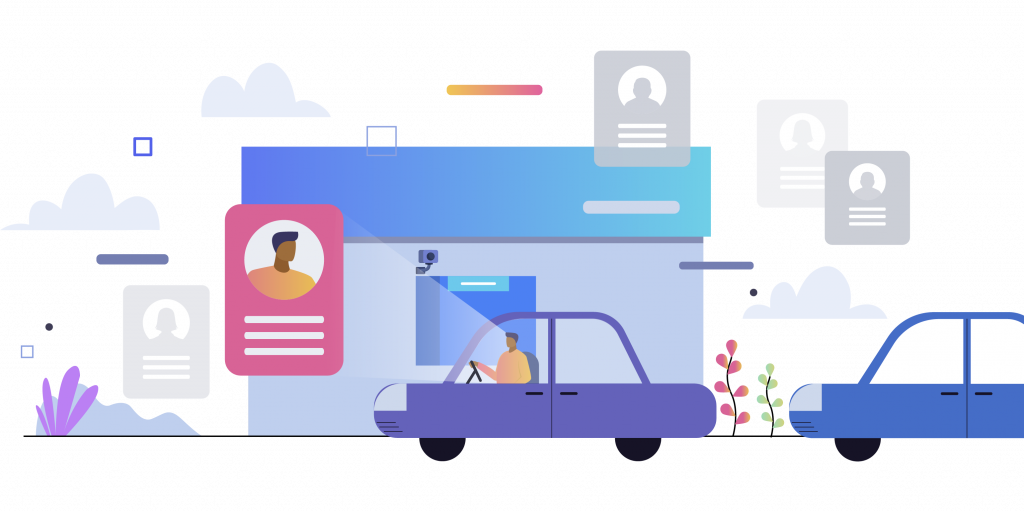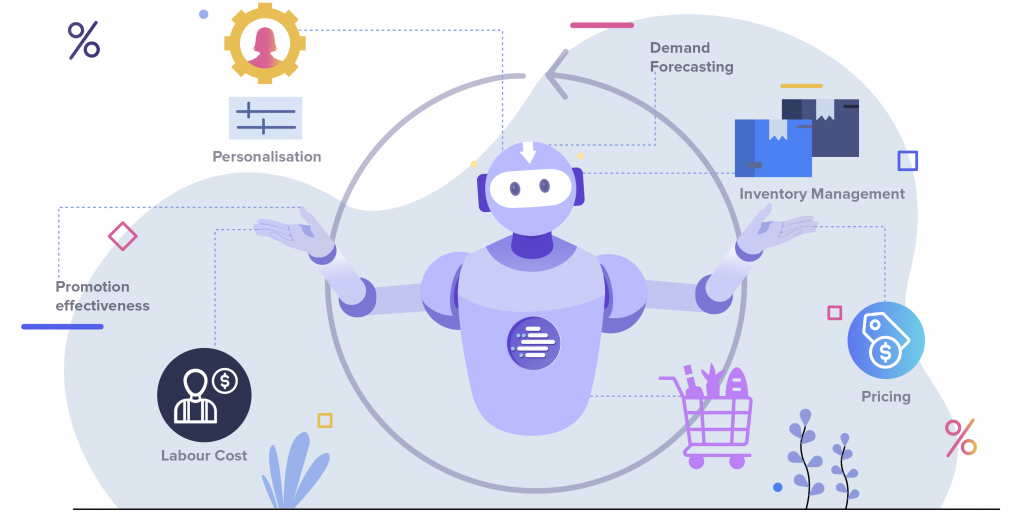AI-Powered Retail Optimization: The Consumer Perspective
AI-Powered Retail Optimization: The Consumer Perspective
Any conversation about Artificial Intelligence in retail, restaurant, and omnichannel commerce leads inevitably to the dichotomy between enterprise users and the end consumer. Who does the AI truly serve?
It is a remarkable paradox of the digital era that online interactions conducted over a great distance can also add intimacy in shopper experience through intelligent personalization. Executives of large brick and mortar retailers and chain restaurants have long struggled to meet the challenge of sustaining shopper relationships at a local level, while making management decisions at a far-away headquarters.
Loyalty programs and mobile apps are essential to this effort, but they are often focused on distributing offers to shopper segments based on basic algorithms. Price optimization tools are generally limited by practicality to periodic updates – because the tools and the people that manage them can only handle so much.

According to Rama Rao, Ph.D., visionary co-founder of Hypersonix and its Chief Product and Data Officer, AI can be the key to regaining and expanding the type of intimacy that owner-operators used to have with their customers. It leads to better and faster decision making and more frequent responses to changing conditions.
“Consumers leave digital trails as they interact with businesses and commerce entities,” says Rao. “This generates a lot of data and also creates a massive opportunity for localization and personalization.”
The challenge, of course, lies in parsing these vast data streams from within the enterprise and outside it. Then embed a decision process that enables the enterprise to be rapidly responsive to shopper preferences and deliver best-in-class shopper experiences.
Rao is certain that conversational AI is one way to deliver this kind of decision-making power to managers and merchants. That’s the vision he brings to Hypersonix, informed by his experiences as a data leader at PayPal, eBay, Intuit, and his engagements with commerce customers at Hypersonix. The payoff comes in the form of superior shopper satisfaction and loyalty, revenue growth and profitability, he says. This happens despite an increasingly competitive and unforgiving market environment.
In this three-part interview feature, Dr. Rao shares his vision for an AI-enhanced future. We begin with an exploration of AI from the consumer perspective.
AI Meets Shopper Experience
Q. What do consumer commerce executives most need to know about AI as a difference-maker for their customers?
Dr. Rama Rao: We think of AI today as a business imperative because of some well-recognized trends.
With the rise of technology and digital commerce, consumers are leaving digital trails in the way they interact with businesses and commerce entities. This is generating a lot of data and it is also creating an opportunity for personalization.
Consumers expect companies to make their commerce engagement much simpler. Once a shopper has expressed a desire or an interest in certain types of products or services, they expect the retailer to recognize them and know their preferences and make shopper experience fast and simple. If not, you get situations where buying decisions get delayed, transactions take longer and require more effort. Then the golden moment – where purchase commitment and transaction completion come together – is lost.

For example, at PayPal, we strived to always strike the right balance between information needed from users to keep them safe, while letting them complete an online purchase as seamlessly as possible. And that required us to invest and innovate in data and experiences that have redefined online purchases. Today as a consumer, I rarely enter my credentials or financial details for a transaction. If I need to do that, I’d likely lose interest in making the transaction.
This is a simple example. Today shoppers are engaging with a lot of businesses on mobile. Retailers have loyalty programs that can intelligently register my preferences on all aspects of my purchase journey, so if I come back again and make a transaction, they know it’s me. Moreover, they go a step further to recommend new products or personalized substitutes for me – creating a powerful shopping experience for me as a consumer.
Q. With consumer expectations for AI-enabled personalization rising, are all enterprises capable of investing and delivering on the promise?
Rao: Fantastic point.
The ways in which we engage in commerce keep changing. It’s becoming more digital, and there are many more touchpoints and channels of interaction. And further, loyalty programs allow me to share my preferences so that I get more personalized treatment.
Consequently, the players who have the resources and the prowess to deal with these massive data volumes and provide personalization are the ones out front defining these experiences. Guess what happens to the next tier, and the next tier below?
Small and mid-sized entities are feeling the squeeze, because they are competing against the large enterprises but can’t invest in this at the same footing. This can make them look completely outmoded if they cannot offer the same level of facility, convenience, speed, and personalization as the larger enterprises.
A great example is to compare the largest banks with credit unions. We have seen the rise of digital assistants – like Erica by Bank of America and the Chase Digital Assistant from JP Morgan Chase. They’ve invested a lot to make the experience much simpler for customers. The mobile experience can be slick and fast. All I do is pick up my phone and say, “I want to deposit a check,” or “I want to check my balance.” I don’t even have to navigate or click on the third panel for check deposit. I can just say or type what I want, and Erica gets me to the right place.

At times it’s almost a human-like experience. I ask one person to help – like a smart concierge – and this entity helps me navigate. I don’t have to remember anything else.
With that standard established, what happens to other banking entities that have not developed or invested in this? The ante has been raised – they now have to deliver similar experiences or look for other ways to deliver value. As these experiences started rolling out, the most critical questions for midsized entities became , “How do we deliver the right experiences?” “How do we manage this data and extract value from it?” “How do we prevent the revenue and margin erosion which is likely coming because of these competitive pressures?”
It has become a top priority for CIOs in the financial services vertical. Any entity that is competing against much more data focused and funded larger enterprises must ask itself, “What is my path to providing all of these kinds of solutions?”
Q. Is this phenomenon unique to the banking sector?
Rao: You can see this playing out in all verticals.
In food services, there is the phenomenal dynamic menu experience now in hundreds of McDonalds drive-throughs. As you come through, they can recognize you, and the electronic menu board changes to feature the kinds of things that they know you prefer and also make informed suggestions. How do you compete against that?
That’s the level of personalization we are starting to get to. Restaurants are able to recognize people who have visited multiple times as they enter the drive-through lane, and smartly curate the menu to feature the items that they care about.

Consequently, their guests move through the checkout line faster, which allows more sales per hour. They feel like McDonalds understands them. Interestingly, with the COVID-related changes and the drop of dine-in traffic, drive-through has become a critical channel. And what happens when you have crafted a novel way, where you have delighted customers and generate more revenue per hour? You have an advantage.
If you are a first mover, you can define such experiences and be innovative. But that forces remaining businesses who lag behind to figure out how they can get this same kind of facility – but more efficiently – when they don’t have an army of IT engineers or data scientists.
Q. What else is driving these new expectations?
Rao: Well, the third trend concerns the technology process itself. We have seen significant moves forward in omnichannel commerce, where it has tried to follow the customer.
Ecommerce started as a completely isolated channel that was very distinct from an in-store shopper experience. It has moved progressively to where the channel boundaries are completely blurred. As a result, in addition to online ordering and delivery, we get all these new acronyms and concepts like BOPIS (Buy online pickup in store), BORIS (Buy online, return in store), order-in-store-deliver-to-home, curbside pickup.
What retailers are trying to do is fulfill and meet shopper needs wherever, whenever they can catch their attention. They are not going to limit shoppers by saying, “Hey, you must come to my online store.”
That aspect has impacted even large enterprises. A good example is grocery, which today, has some of the largest ecommerce entities like Kroger, Albertsons and Walmart. As we’ve all experienced in the last five months, online grocery and delivery have taken off completely due to COVID shopping.
Now even the largest entities are being pushed into dealing with and understanding how to do omnichannel commerce in ways they may have never thought about, and in a timeframe where they have to accomplish it very fast.
Q. So could we say that these trends are driving greater competitive pressures?
Rao: Absolutely. When executed well, data and AI confer greater advantages and widen the gap. Further, while these commerce models are changing, new players are also arriving. These are entrants into the landscape who question the value and the ownership of the customer themselves. Think about Instacart, Shipt and Uber Eats. They are coming strongly into the delivery of food and groceries.
This raises tough questions, like: Who owns the customer? Who fulfills? Who is front and center to the customer? Who is being relegated to the background? Who has pricing power?
When I go to the Instacart website, the fact that I may be getting items from five different retailers is visible today. How is that going to evolve? Who am I going to look for when I land? These questions are completely upending the relationships and the actors and the whole of the customer experience.

This disruption is entirely technology driven.
We see large national grocery chains looking to figure out how to integrate their ecommerce channel with multiple fulfillment channels. They have as many as five different channels that help them fulfill customer demand. You can buy in store or pick it up outside. You can order with Instacart. You can order with DoorDash or Shipt. Each of these are completely isolated independent technology platforms which they are now trying to manage and work through.
So, we see a change in commerce, technology, relationships, and the ownership of customer experience. All of these other factors – starting with what we said about customer expectations and personalization – are playing out right now.
Q. How else has tech set this up to occur?
Rao: You could say that underlying all of this is the evolution of technology itself. Cloud computation has become a standard. Cloud storage has become much more commoditized. Distributed computing is a common practice.
People are getting familiar with using digital agents like Alexa, Siri and Google Home, which have completely exploded on the scene. In terms of both technology and user experience, a set of changes are happening.
As I see it, the right technologies are lining up. There is significant pressure on companies to adopt change, manage new data streams and figure out the right ways to make use of it.
With all of this it is now getting to the point where it is less of a choice and more of an imperative to do the right things to drive growth and profitability.
Q. So how do you envision the role of AI in all this?
Rao: Most businesses that we speak to are trying to deal with these problems that we have discussed. These are the marketplace forces they are working with or against at any given time.
They ask, “Which solutions can help me address these problems?”

The way we get to the answer is truly what makes a difference for an enterprise. In many cases it does turn out that the kind of solutions and methodologies that we use to offer solutions involve the use of advanced Machine Learning techniques, Natural Language Processing, AI capabilities, and related technologies.
Interestingly in every one of our conversations, the customer first asks: What can your solution deliver? How is it going to remove my pain point? How is it going to help me optimize my revenue, costs and margins?
And, that’s their primary need. An AI-driven solution that delivers clear impact and is within their reach.





